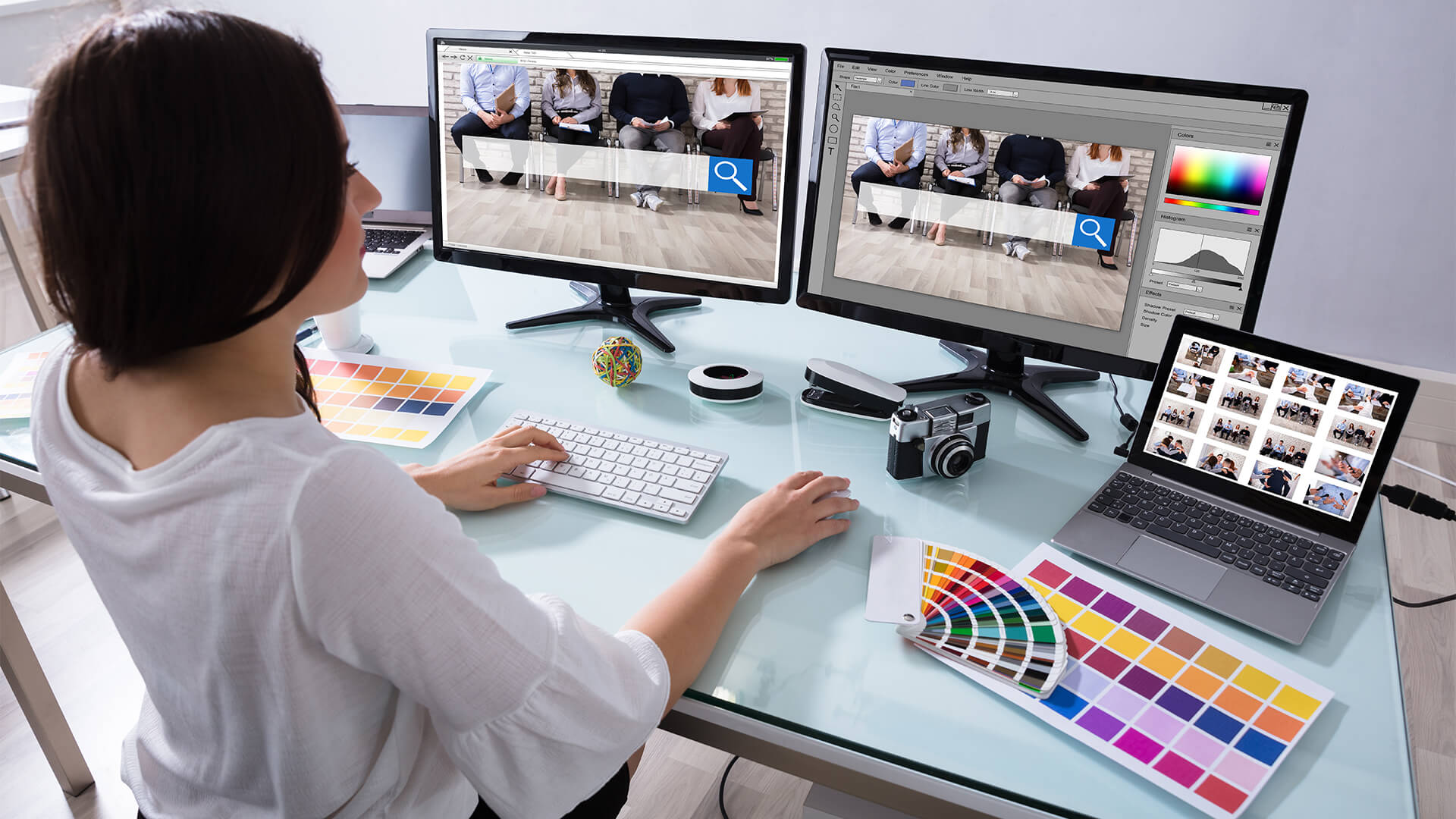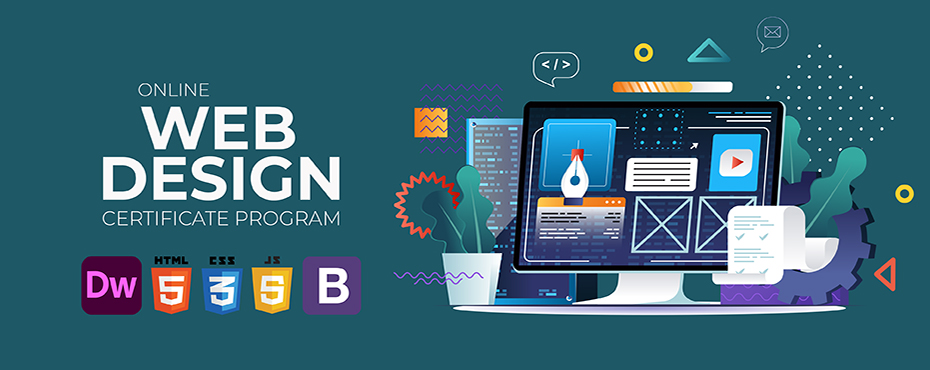All Categories
Featured
Table of Contents
- – 53 Web Design Tools To Help You Work Smarter I...
- – Web Developers And Digital Designers - Bureau...
- – Minneapolis Web Design - 100+ Five Star Revie...
- – Siteinspire - Web Design Inspiration Tips and...
- – What Does A Web Designer Do? - Careerexplorer...
- – Web Page Design: A Comprehensive Guide - Adob...
- – Web Design Projects - Behance Tips and Tricks:
- – Google Web Designer - Home Tips and Tricks:
- – Minneapolis Web Design - 100+ Five Star Revi...
- – Web Design Services - Verizon Small Business...
- – Web Design - Wikipedia Tips and Tricks:
53 Web Design Tools To Help You Work Smarter In 2022 Tips and Tricks:
Quick summary Functionality and the utility, not the visual style, figure out the success or failure of a site. Considering that the visitor of the page is the only individual who clicks the mouse and for that reason decides everything, user-centric design has actually established as a basic approach for effective and profit-oriented website design - web design frederick md.
and the energy, not the visual design, determine the success or failure of a site. Because the visitor of the page is the only person who clicks the mouse and therefore decides whatever, user-centric style has ended up being a basic method for effective and profit-oriented website design. If users can't utilize a function, it might as well not exist.
g. where the search box need to be put) as it has actually already been performed in a number of posts; instead we focus on the techniques which, used appropriately, can cause more sophisticated style decisions and simplify the procedure of perceiving provided details. Please discover that you might be interested in the usability-related posts we have actually released before: Concepts Of Good Site Style And Effective Website Design Guidelines, In order to utilize the principles properly we initially need to understand how users interact with sites, how they think and what are the standard patterns of users' habits.
Web Developers And Digital Designers - Bureau Of Labor ... Tips and Tricks:
Visitors glance at each new page, scan a few of the text, and click on the very first link that captures their interest or vaguely resembles the important things they're looking for. There are large parts of the page they do not even look at. Most users look for something intriguing (or useful) and clickable; as quickly as some promising prospects are discovered, users click.
If a page provides users with top quality content, they want to jeopardize the material with advertisements and the design of the website. This is the reason why not-that-well-designed websites with premium content acquire a lot of traffic over years. Content is more crucial than the design which supports it.

Very simple principle: If a site isn't able to fulfill users' expectations, then designer stopped working to get his task done effectively and the business loses cash. The higher is the cognitive load and the less intuitive is the navigation, the more prepared are users to leave the website and search for alternatives.
Minneapolis Web Design - 100+ Five Star Reviews - Seo ... Tips and Tricks:
Neither do they scan web page in a linear style, going sequentially from one website area to another one. Instead users satisfice; they pick the first affordable option. As soon as they find a link that appears like it might result in the objective, there is a great chance that it will be right away clicked.
It does not matter to us if we understand how things work, as long as we can use them. If your audience is going to imitate you're designing billboard, then style great signboards." Users desire to have the ability to control their browser and depend on the consistent information presentation throughout the site.
If the navigation and website architecture aren't intuitive, the number of enigma grows and makes it harder for users to understand how the system works and how to receive from point A to point B. A clear structure, moderate visual hints and easily recognizable links can assist users to discover their course to their objective.
Siteinspire - Web Design Inspiration Tips and Tricks:

claims to be "beyond channels, beyond products, beyond distribution". What does it suggest? Considering that users tend to explore websites according to the "F"-pattern, these 3 declarations would be the very first elements users will see on the page once it is filled. The style itself is basic and intuitive, to understand what the page is about the user requires to browse for the response.
When you have actually accomplished this, you can communicate why the system works and how users can gain from it. People won't use your website if they can't find their way around it. 2. Do Not Squander Users' Perseverance, In every task when you are going to offer your visitors some service or tool, attempt to keep your user requirements minimal.
First-time visitors want to, not filling long web kinds for an account they may never use in the future. Let users explore the website and discover your services without forcing them into sharing personal information. It's not reasonable to require users to go into an email address to test the feature.
What Does A Web Designer Do? - Careerexplorer Tips and Tricks:
Stikkit is a perfect example for an easy to use service which needs almost absolutely nothing from the visitor which is inconspicuous and reassuring. Which's what you want your users to feel on your website. Apparently, Mite requires more. The registration can be done in less than 30 seconds as the type has horizontal orientation, the user doesn't even require to scroll the page.
A user registration alone is adequate of an obstacle to user navigation to cut down on inbound traffic. Manage To Focus Users' Attention, As websites supply both fixed and vibrant content, some elements of the user interface attract attention more than others do.
Focusing users' attention to particular locations of the website with a moderate use of visual components can help your visitors to receive from point A to point B without thinking about how it really is supposed to be done. The less enigma visitors have, the they have and the more trust they can establish towards the business the website represents.
Web Page Design: A Comprehensive Guide - Adobe Xd Ideas Tips and Tricks:
Strive For Feature Exposure, Modern web styles are generally criticized due to their approach of assisting users with aesthetically appealing 1-2-3-done-steps, big buttons with visual effects and so on. From the design perspective these elements actually aren't a bad thing.
The site has 9 main navigation choices which are visible at the very first glance. The choice of colors may be too light, though. is a basic principle of successful interface style. It doesn't really matter how this is attained. What matters is that the material is well-understood and visitors feel comfy with the way they engage with the system.
com gets straight to the point. No adorable words, no overemphasized declarations. Instead a cost: simply what visitors are searching for. An optimum option for effective writing is touse brief and concise expressions (come to the point as quickly as possible), use scannable design (categorize the material, utilize several heading levels, utilize visual elements and bulleted lists which break the flow of uniform text blocks), use plain and unbiased language (a promo does not need to seem like ad; provide your users some reasonable and objective reason that they must use your service or remain on your site)6.
Web Design Projects - Behance Tips and Tricks:
Users are seldom on a site to delight in the design; in addition, in many cases they are searching for the details in spite of the style - web design frederick md. Pursue simplicity instead of complexity. From the visitors' perspective, the best site design is a pure text, with no ads or additional material obstructs matching precisely the inquiry visitors utilized or the content they have actually been trying to find.
Finch clearly provides the details about the site and gives visitors a choice of alternatives without overcrowding them with unnecessary content. Not just does it assist to for the visitors, however it makes it possible to view the info provided on the screen.
Complex structures are harder to check out, scan, analyze and work with. If you have the choice in between separating 2 design sections by a visible line or by some whitespace, it's usually much better to use the whitespace solution. (Simon's Law): the much better you handle to supply users with a sense of visual hierarchy, the much easier your content will be to perceive.
Google Web Designer - Home Tips and Tricks:
The same conventions and guidelines should be applied to all elements.: do the most with the least quantity of cues and visual components. Clearness: all parts should be developed so their meaning is not unclear.
Conventions Are Our Buddies, Conventional style of website aspects doesn't result in an uninteresting web site. It would be an use problem if all sites had different visual presentation of RSS-feeds.
comprehend what they're getting out of a site navigation, text structure, search positioning etc. A case in point from functionality sessions is to translate the page in Japanese (presuming your web users do not know Japanese, e. g. with Babelfish) and provide your usability testers with a job to discover something in the page of different language.
Minneapolis Web Design - 100+ Five Star Reviews - Seo ... Tips and Tricks:
Test Early, Test Frequently, This so-called TETO-principle should be used to every web design task as functionality tests typically offer into considerable issues and concerns related to an offered design. Test not too late, not too little and not for the incorrect reasons.
Some crucial indicate bear in mind: according to Steve Krug, and testing one user early in the task is better than testing 50 near completion. Accoring to Boehm's first law, mistakes are most frequent during requirements and style activities and are the more expensive the later they are removed.
That implies that you develop something, test it, repair it and then check it once again. There might be issues which haven't been discovered during the first round as users were practically blocked by other problems. functionality tests. Either you'll be indicated the problems you have or you'll be indicated the lack of significant style defects which remains in both cases a helpful insight for your project.
Web Design Services - Verizon Small Business Essentials Tips and Tricks:

This holds for designers too. After you've dealt with a site for few weeks, you can't observe it from a fresh point of view any longer. You understand how it is developed and for that reason you understand precisely how it works you have the knowledge independent testers and visitors of your site wouldn't have.
It can be linked to other locations such as graphic style, user experience, and multimedia arts, however is more appropriately seen from a technological standpoint. It has actually become a large part of individuals's daily lives. It is difficult to envision the Web without animated graphics, different designs of typography, background, videos and music.

Throughout 1991 to 1993 the Web was born. Text-only pages might be seen utilizing a basic line-mode internet browser. In 1993 Marc Andreessen and Eric Bina, created the Mosaic browser. At the time there were numerous browsers, however most of them were Unix-based and naturally text heavy. There had been no integrated technique to graphic design elements such as images or noises.
Web Design - Wikipedia Tips and Tricks:
The W3C was created in October 1994 to "lead the World Wide Web to its complete potential by establishing typical procedures that promote its development and ensure its interoperability." This discouraged any one company from monopolizing a propriety browser and shows language, which might have altered the result of the Web as a whole.
As this has actually occurred the innovation of the web has actually also carried on. There have actually likewise been considerable modifications in the method individuals utilize and access the web, and this has actually changed how websites are developed. Given that the end of the internet browsers wars [] new web browsers have actually been launched. A number of these are open source meaning that they tend to have much faster advancement and are more supportive of new standards.
Learn more about Lovell Media Group LLC or TrainACETable of Contents
- – 53 Web Design Tools To Help You Work Smarter I...
- – Web Developers And Digital Designers - Bureau...
- – Minneapolis Web Design - 100+ Five Star Revie...
- – Siteinspire - Web Design Inspiration Tips and...
- – What Does A Web Designer Do? - Careerexplorer...
- – Web Page Design: A Comprehensive Guide - Adob...
- – Web Design Projects - Behance Tips and Tricks:
- – Google Web Designer - Home Tips and Tricks:
- – Minneapolis Web Design - 100+ Five Star Revi...
- – Web Design Services - Verizon Small Business...
- – Web Design - Wikipedia Tips and Tricks:
Latest Posts
Beginner's Guide: How To Learn Web Design At Home - Medium Tips and Tricks:
Web Design Definition - Techterms Tips and Tricks:
Penner Home - Durham Web Design - Penner Web Design ... Tips and Tricks:
More
Latest Posts
Beginner's Guide: How To Learn Web Design At Home - Medium Tips and Tricks:
Web Design Definition - Techterms Tips and Tricks:
Penner Home - Durham Web Design - Penner Web Design ... Tips and Tricks: